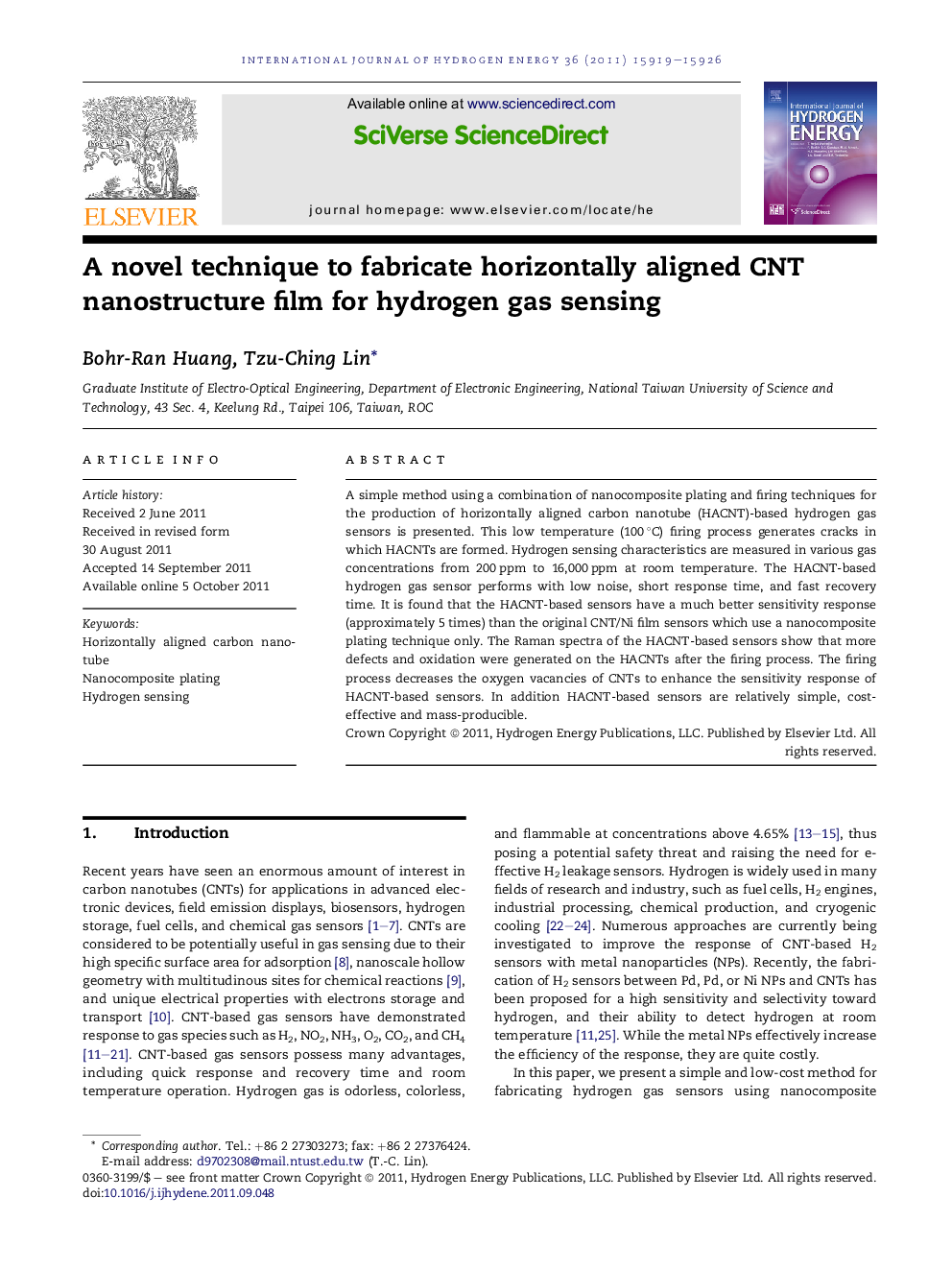| Article ID | Journal | Published Year | Pages | File Type |
|---|---|---|---|---|
| 1277390 | International Journal of Hydrogen Energy | 2011 | 8 Pages |
A simple method using a combination of nanocomposite plating and firing techniques for the production of horizontally aligned carbon nanotube (HACNT)-based hydrogen gas sensors is presented. This low temperature (100 °C) firing process generates cracks in which HACNTs are formed. Hydrogen sensing characteristics are measured in various gas concentrations from 200 ppm to 16,000 ppm at room temperature. The HACNT-based hydrogen gas sensor performs with low noise, short response time, and fast recovery time. It is found that the HACNT-based sensors have a much better sensitivity response (approximately 5 times) than the original CNT/Ni film sensors which use a nanocomposite plating technique only. The Raman spectra of the HACNT-based sensors show that more defects and oxidation were generated on the HACNTs after the firing process. The firing process decreases the oxygen vacancies of CNTs to enhance the sensitivity response of HACNT-based sensors. In addition HACNT-based sensors are relatively simple, cost-effective and mass-producible.
► Nanocomposite plating and crack formation techniques to fabricate horizontally aligned carbon nanotubes. ► Hydrogen sensing characteristics were performed at room temperature. ► High sensitivity of horizontally aligned carbon nanotubes sensors for hydrogen gas sensing. ► Decreases the oxygen vacancies of CNTs to improve the sensitivity response.
